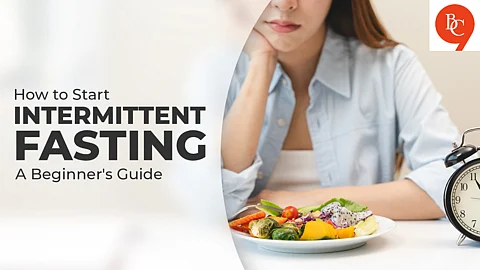

But what actually is Intermittent Fasting — and how do you start it without messing up your health?
Let’s break it down — no starvation, no stress, just smart steps.
What Is Intermittent Fasting (IF), Really?
Intermittent Fasting isn’t about what you eat — it’s about when you eat.
It’s a cycle of eating and fasting windows. You consume all your meals during a set number of hours (your “eating window”) and fast for the remaining hours.
Example:
16:8 method = 16 hours fasting, 8 hours eating.
Other formats include 14:10, 12:12, or even the 5:2 weekly plan.
The goal? Give your body a break from constant digestion, which helps it burn fat, regulate insulin, and improve metabolism.
Why People Love It
No calorie counting
No meal-prep anxiety
Boosts energy and mental clarity
Can help with weight loss, bloating, and hormonal balance
Aligns with natural circadian rhythms
But here’s the catch — it’s not magic. It’s a tool, not a crash diet.
How to Start Intermittent Fasting (Safely)
1. Choose a Method That Fits Your Lifestyle
Start simple:
12:12 (Eat for 12 hours, fast for 12): Great for beginners
14:10 (Eat for 10 hours, fast for 14): Slightly more structured
16:8 (Eat for 8 hours, fast for 16): Popular once your body adjusts
2. Stay Hydrated — Like, Really Hydrated
Water, black coffee, green tea, or infused water are your fasting BFFs. They curb hunger and keep you alert. Just skip anything with calories.
Avoid: Fruit juices, milk in tea/coffee, or protein shakes during fasting.
3. Don’t Binge When the Fast Breaks
It’s tempting to “reward” yourself with a feast. But stuffing your face at 10 AM with fries and cupcakes defeats the purpose.
Break your fast gently:
Start with a fruit or handful of soaked nuts
Follow up with balanced meals — think protein, fibre, and healthy fats
4. Listen to Your Body, Not TikTok
Feeling dizzy, cranky, or overly fatigued? It might mean you’re fasting too long, not eating enough, or missing key nutrients.
Adjust your window. Eat more whole foods. And remember — hunger is not failure.
5. Be Patient — and Consistent
You might not see dramatic results in a week, but your body is recalibrating. IF works best when it becomes part of your lifestyle — not a 10-day challenge.
Stick to a routine for at least 3–4 weeks before switching things up.
Who Should Avoid IF or Check with a Doctor First?
People with diabetes or blood sugar issues
Anyone pregnant, breastfeeding, or trying to conceive
Teens or underweight individuals
Those with a history of disordered eating
Intermittent Fasting isn’t about punishing your body — it’s about syncing with it. When done safely, it can be a powerful tool for better digestion, clearer skin, more energy, and even peace of mind.
But the real flex? Learning when to say, “Today, my body needs a break from fasting — and that’s okay.”
